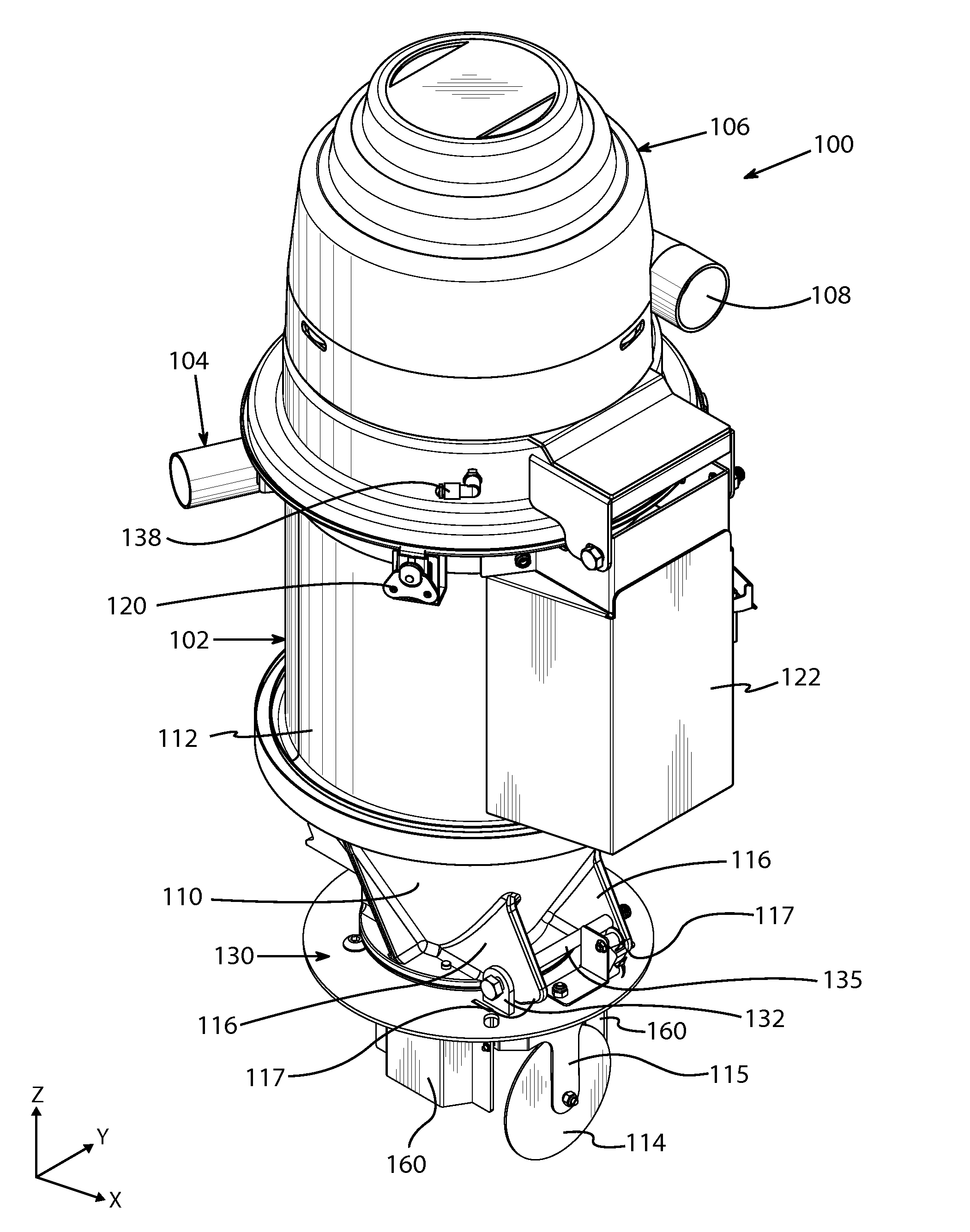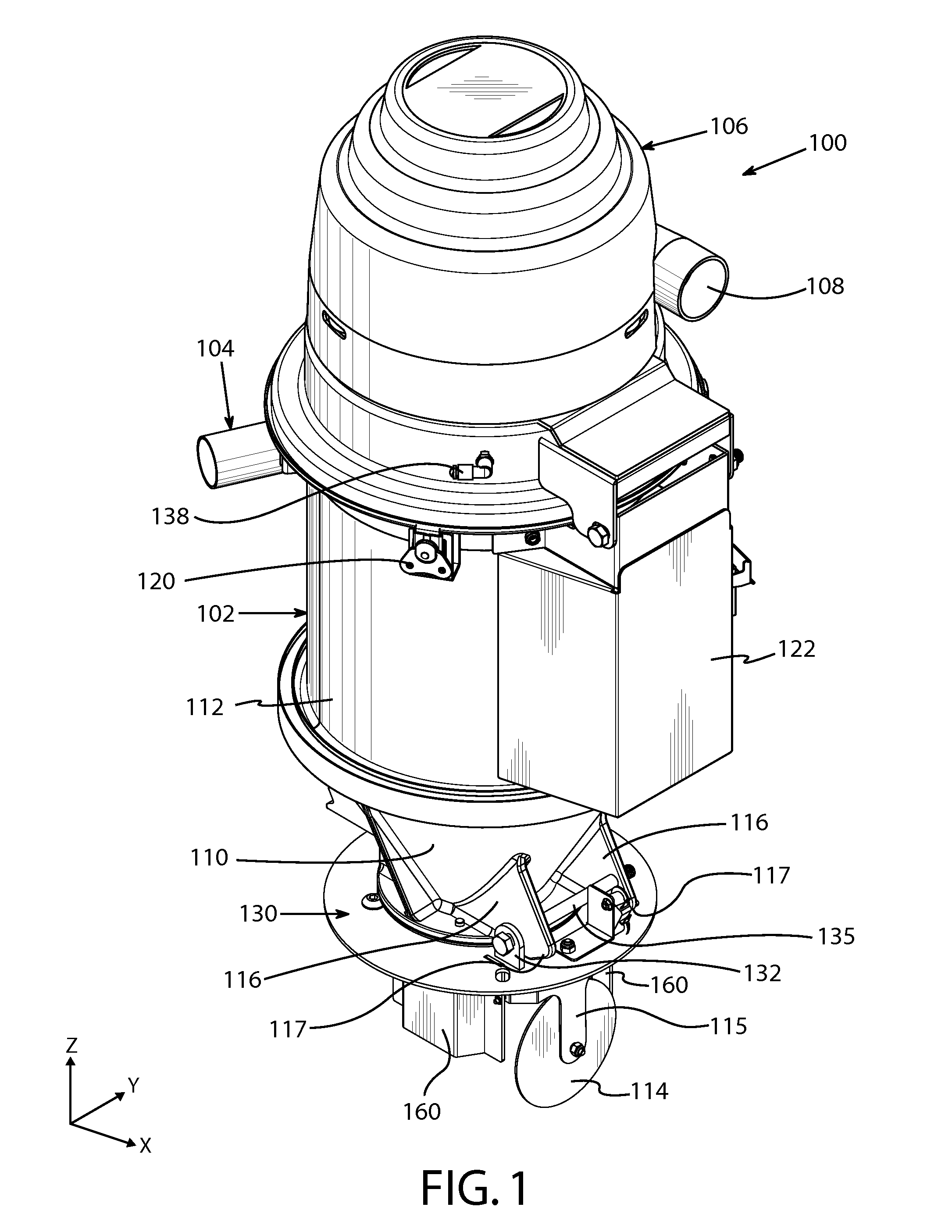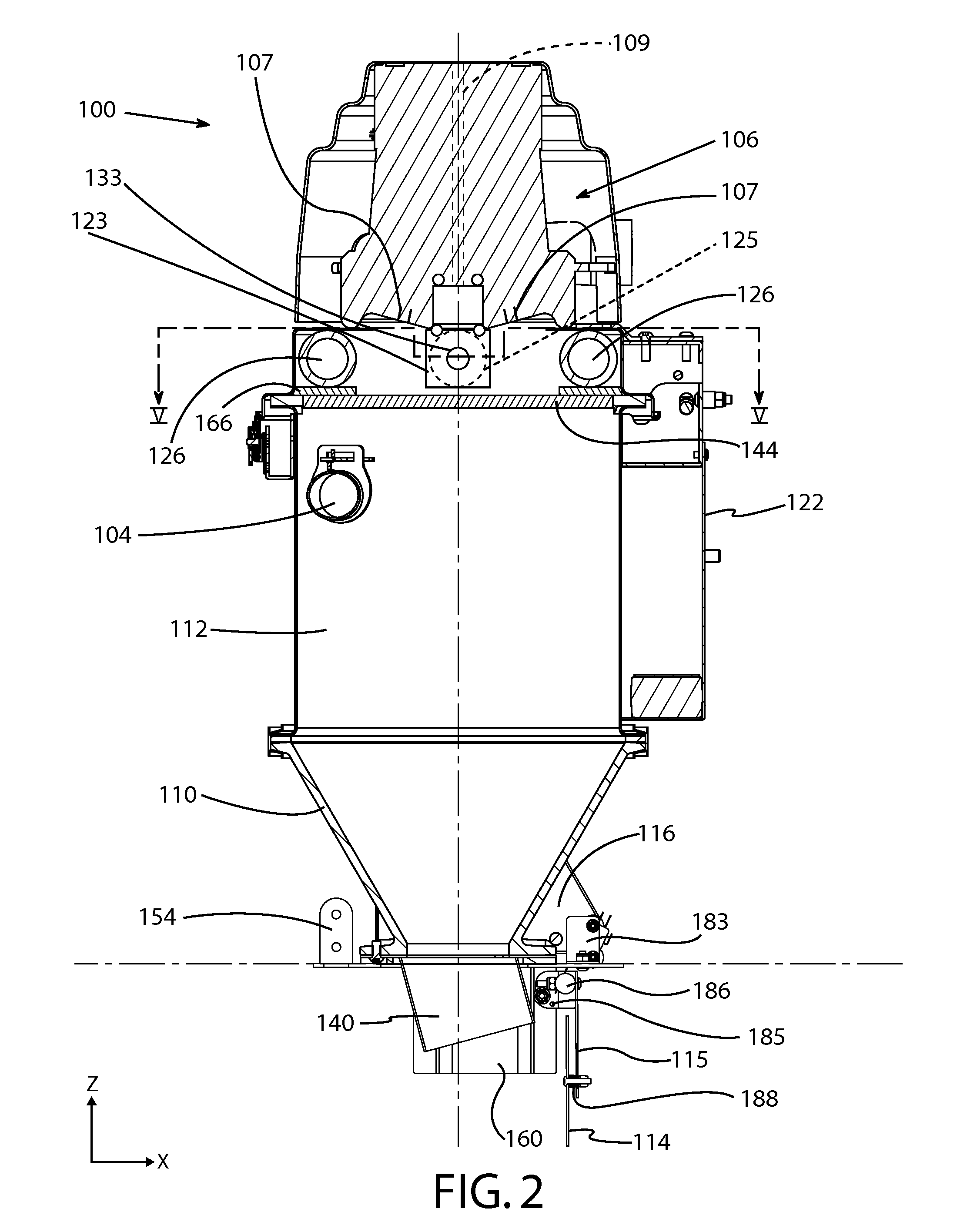Tiltable vacuum loader and receiver with blow-back
a technology of vacuum loader and receiver, which is applied in the direction of packaging, liquid/fluent solid measurement, and opening closed containers, etc., can solve the problems of interrupting the operation, interrupting the operation, and reducing so as to improve reduce the amount of air, and facilitate cleaning. , the effect of improving the reliability of the loader
- Summary
- Abstract
- Description
- Claims
- Application Information
AI Technical Summary
Benefits of technology
Problems solved by technology
Method used
Image
Examples
Embodiment Construction
[0074]This invention provides apparatus and methods of providing blasts of compressed high pressure air to an air filter of a vacuum powered and vacuum conveying resin transport device wherein high pressure air is applied to a dust filter, in a direction opposite that through which air is drawn by the vacuum, to clear the filter of unwanted particles. The invention specifically provides an extremely compact “blowback” device using a minimum of moving parts to produce a blast of compressed air, in a reverse direction through the filter, to clear the filter of dust and to clear a dump flap of any resin material adhering thereto, and in the preferred embodiment does not employ any diaphragm valve, springs or solenoid actuation of the same. The air blast provided is substantial and of much greater force than can be achieved using one or more diaphragm valves at any reasonable cost.
[0075]Referring to the drawings in general, and to FIG. 1 in particular, a tiltable vacuum loader embodying...
PUM
| Property | Measurement | Unit |
|---|---|---|
| time | aaaaa | aaaaa |
| diameter | aaaaa | aaaaa |
| diameter | aaaaa | aaaaa |
Abstract
Description
Claims
Application Information
 Login to View More
Login to View More - R&D
- Intellectual Property
- Life Sciences
- Materials
- Tech Scout
- Unparalleled Data Quality
- Higher Quality Content
- 60% Fewer Hallucinations
Browse by: Latest US Patents, China's latest patents, Technical Efficacy Thesaurus, Application Domain, Technology Topic, Popular Technical Reports.
© 2025 PatSnap. All rights reserved.Legal|Privacy policy|Modern Slavery Act Transparency Statement|Sitemap|About US| Contact US: help@patsnap.com



